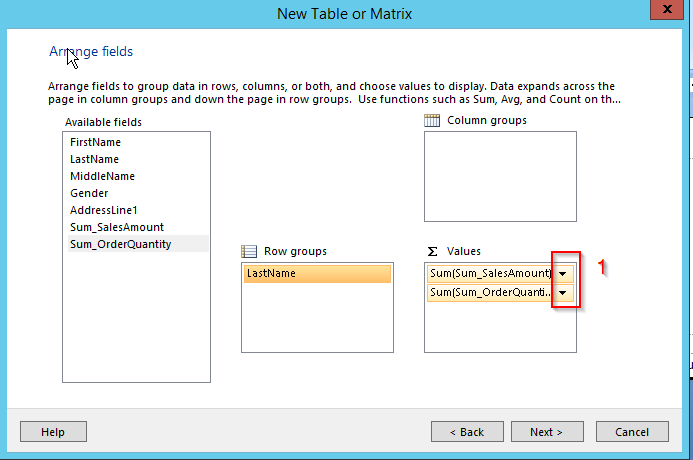Goal
We need to create a quick overview of the AdventureWorks spreadsheet showing customer revenue for selected period. Our goal is not to describe Report Builder options in detail. This will be described in other separate posts. I would like to create quick “how to” procedure for people who see Reporting services for the first time.
Requirements:
-
- To create a report, you will need a report builder application that you download directly from Reporting Services Report Manager. If you are not able to download it, please contact your administrators to make the application available or set you permissions accessing Report Manager. The application can be downloaded at following link https://bit.ly/2xaRQxB.
- Download Adventure Works DWH https://bit.ly/2zsevpc
Summary:
- Run Report builder application and Report Builder wizard
- Defining data sources and connections
- Create a dataset and build query
- Define report design
- Modify generated report
- Publication of the report
Detailed procedure:
Go to your reporting services manager url and run Report builder application.
To run the builder report, click on menu link at top menu (picture 1 – bellow).

After starting the application, left click on New-> File at the top-left and select Tablix or Matrix Wizard
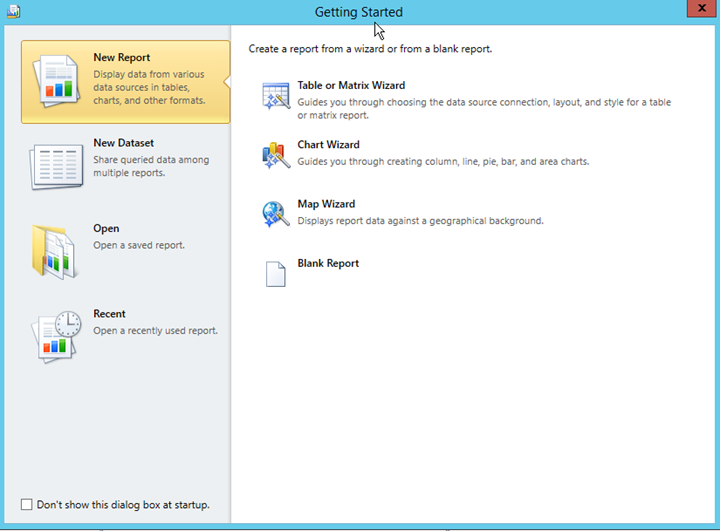
Then you have to create new dataset or select an existing one. In our scenario you will create new dataset.
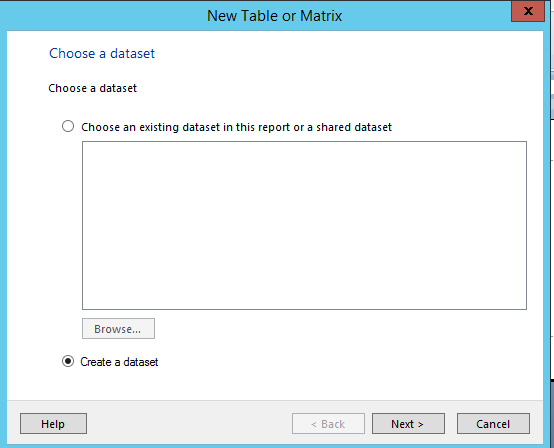
In next window, select connection type and name your data source. You connect to the SQL server – you leave default connection – Microsoft SQL Server.
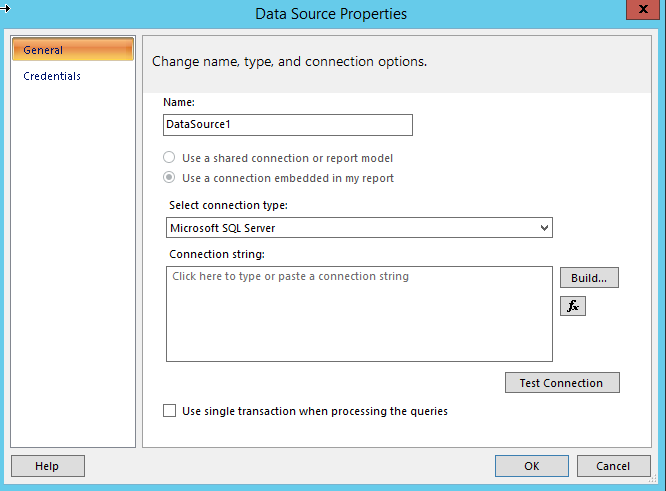
Picture 4 – datasource
Clicking on Build button next to Connection string new dialog window appears. (or you can type connection string manually to Connection string text area as you can see on picture above).
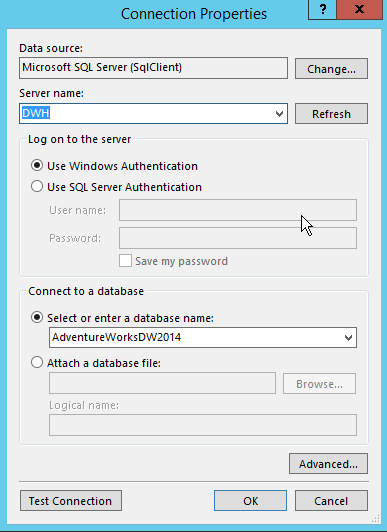
Select server you will connect to, then select correspondent database and authentication type that will be used to connect to the server. If you are trying on your local machines suppose you will use Windows Authentication as default.
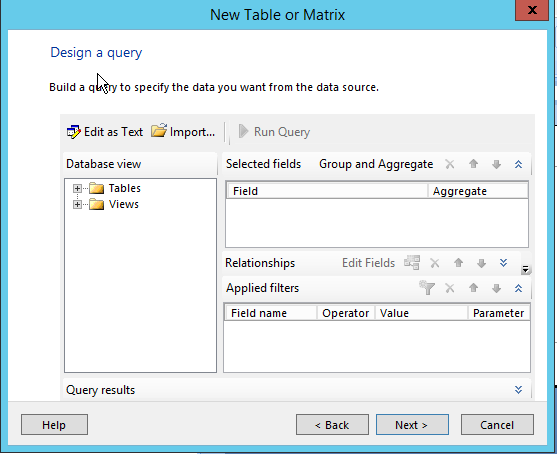
As next step you have to define dataset for your report. Dataset returns requested data from defined connection. In our scenario we connect to SQL server database so you need to build query to return data form database. Report Builder Wizard offers possibility to create query by query designer – on picture above. You can write your query directly after clicking Edit as Text button, top on the dialog window.
On the left menu there are database objects such views or tables. In the upper right, you define fields for query (picture 6).
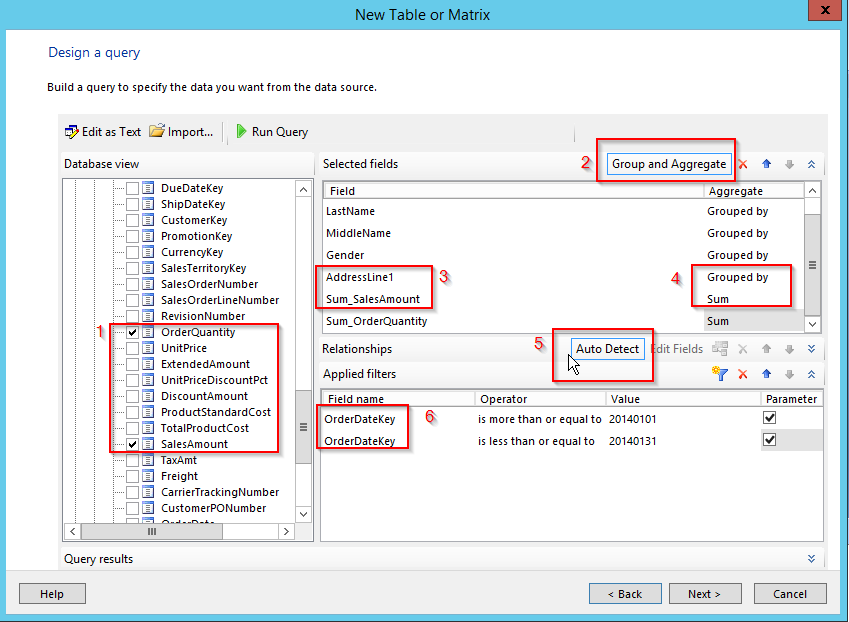
In our scenario, select the SalesAmound, Sum_order Quantete field from the FactInternetSales table to be monitored. Use the OrderDateKey column to select a period in the report. To by able to track data by customers, you have to select the columns LastName, MiddleName, Gendeer, AdressLine1. For selected fields in the Aggregate columns, we choose their behaviour. For the fields we want to track Sum_SalesAmount, Sum_OrderQuantity selects Sum operator. For other columns, let Grouped by (Picture 7 – 2;4). According to these columns, the data will be grouped. Select the OrderDateKey column at the bottom of the filters to select the period for which we want to track the data (Picture 7 – 6).. In the field operator, we define behaviour of filters.
If there is reference integrity defined on the source tables (foreign keys, primary keys), then using Auto Detect (Picture 7 – 5), we create links between the tables in the Relationships section (Picture 8 – 1).
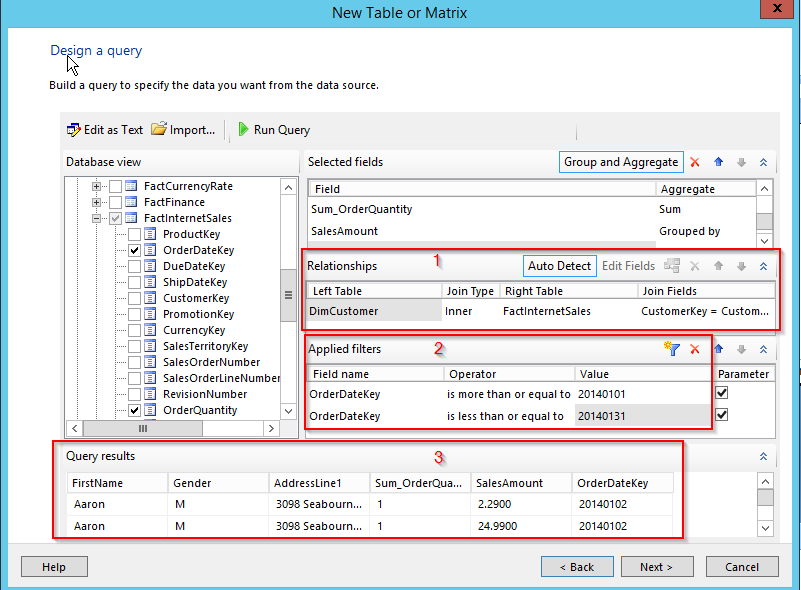
Click on the Run Query icon at top of the screen to return query data in Query results grid. (Picture 8- 3)
In case that reference integrity is not defined, relationship can be set manually. (Picture 9 ) First click on Auto Detect icon to enable icon on the right. Clicking on that icon creates new relationship (Picture 9 – 2). You have to define tables, join type and join fields to create required relationship.

Picture 9 – Relationships
From the next section Next, we define the report appearance and the layout of the individual elements.
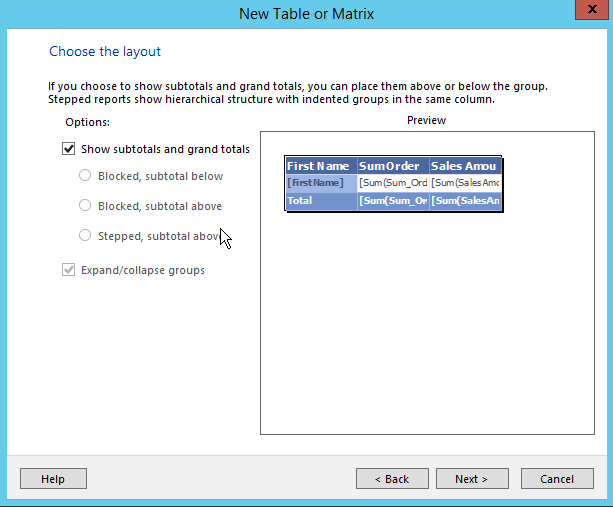
First, select the location of the summation lines in the table. In our case, just leave Show subtotals and grand totals checked.
Click next to select one of the predefined themes. Leave Ocean and click Next.
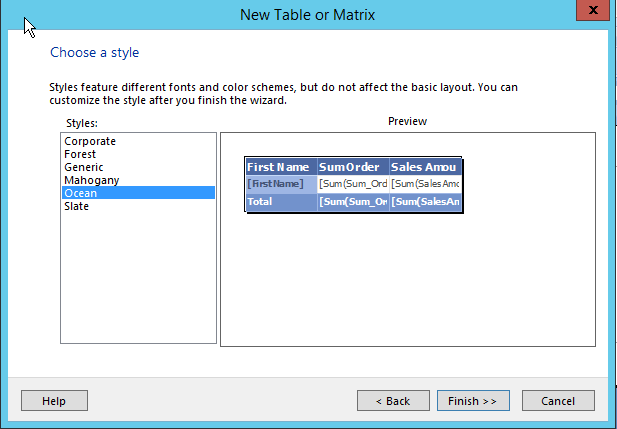
Picture 12 – Report fields definition
In the following window we select requested values and organize them. Our report will have data organized in row group, select the Last Name field in the Row groups and select Sum_SalesAmount, Sum_OrderQuantity in the Values area. The Sum operator was selected by default. By clicking on the arrow of the selected attribute (Picture 11 – 1), it is possible to change the aggregate function.
Clicking Next in report builder wizard displays a preview of the predefined report. At this stage, it is possible to edit the report. We will change the report header in the pre-generated textbox field above the table. (picture 12 – 1)
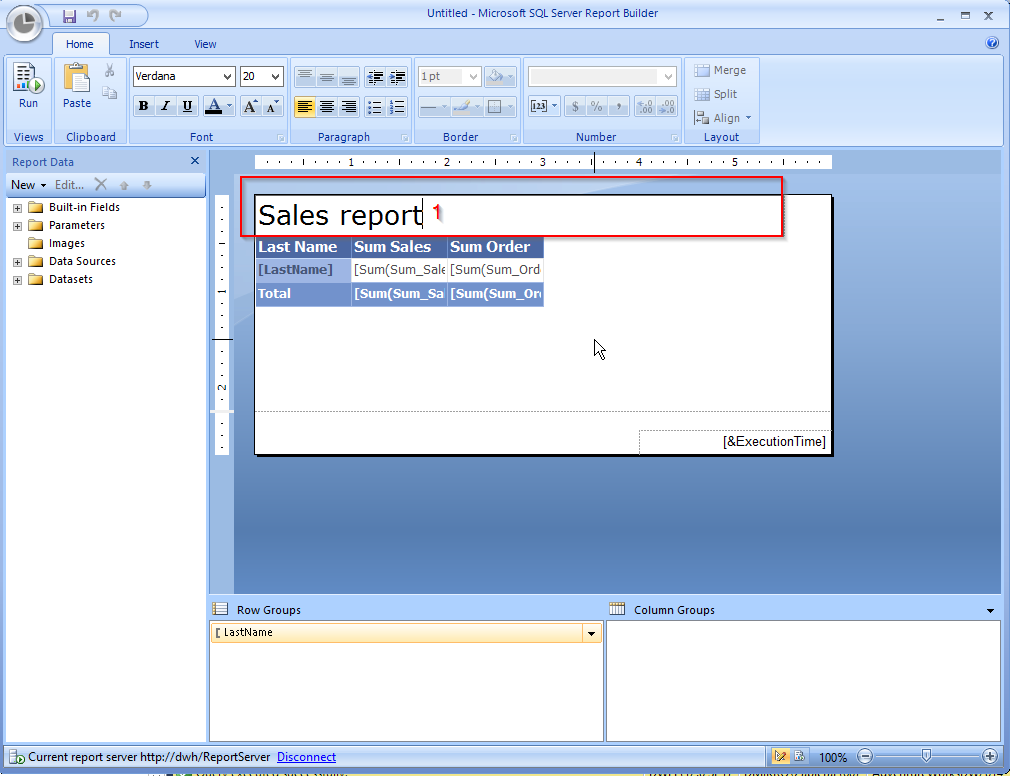
On the left, in the Report Data window, you can check the generated filters after clicking Parameters (Picture 12 – 1). We could view, edit, add Datasets or Data Sources.
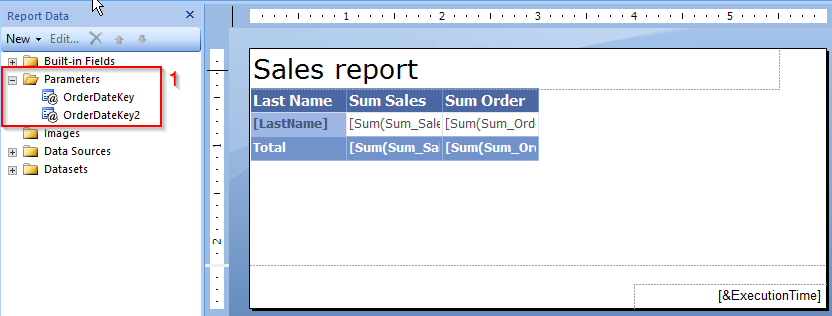
Picture 14
The last step is to publish the report to the report server. Click on the save icon at the top.
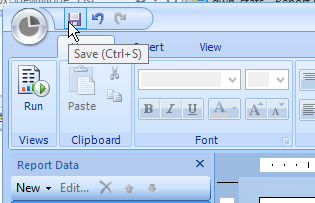
The next step is a dialog box for selecting a path to save the report and selecting a name.
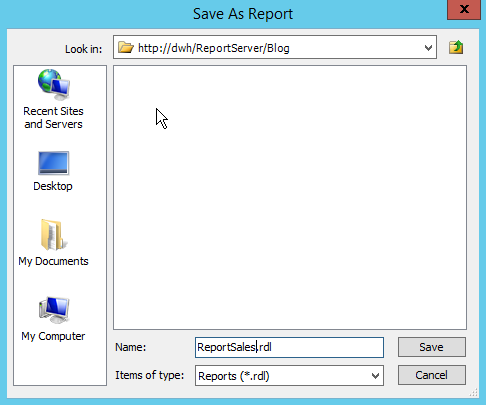
Voila, our first report see the light of day.
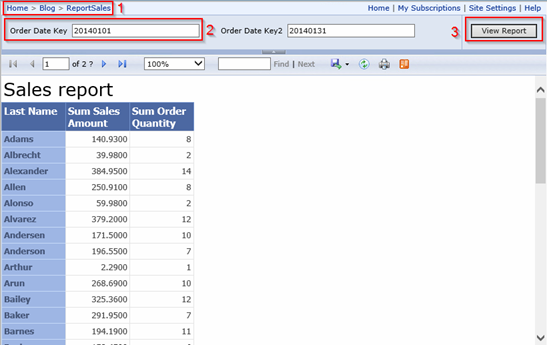
Now we could add more columns to our Tablix, first name for example. It will be explained in next post how to edit existing report.
As you can see you can create your first report very quickly and Report builder wizard helps you to achieve it without detail knowledge of SQL language.
You can download report here ReportSalesFirstSammple.
